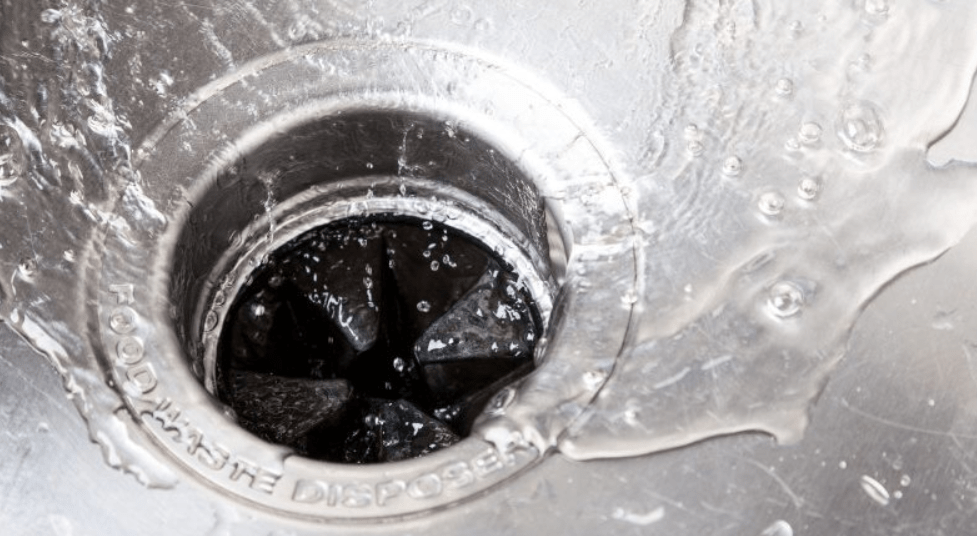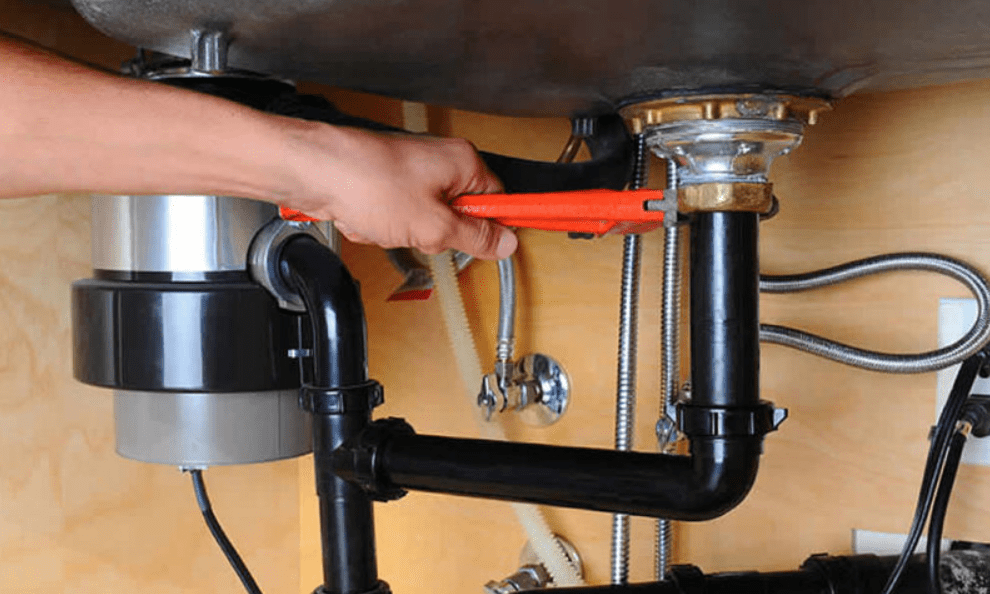Maybe your garbage disposal is leaking, not draining, clogged, jammed, or simply not working. Fortunately, this guide will help you fix your garbage disposal. There is a need to know how to diagnose and fix the problem with household tools. The good thing about garbage disposals is that they are easy to fix, but you should unplug the unit first before you try to fix it.
How to Clear a Jammed Garbage Disposal?

Step 1: Press Reset Button
First, unplug your garbage disposal. Then pull the plug out to ensure the disposal unit does not activate while working on it. Remember that your safety is the most important thing.
Most garbage disposal units have reset buttons located at the underside. It may be labeled as a thermal overload button or reset button. Press this button (usually reset buttons are red in color). If it seems to stick out, you should push it back into the unit, and it will fix the system immediately.
Run cold water through the disposal for at least 3 minutes. Plug your unit back and ensure it is turned on. At this point, the reset button ought to stay in place.
If the blades are stuck again, you should carefully listen for signs of motor humming. That will tell you whether your machine is functional, and the only issue you have is jammed grinders.
On the other hand, if the motor is not humming and there is power, then there is a likelihood that your garbage disposal is broken, and you need to replace it.
However, if this method does not work, you should follow other methods discussed in this guide that involve rotating the grinders and blades. Always remember to keep your garbage disposal unplugged.
Step 2 Rotate Disposal Blades
Using an Allen wrench, insert it into the hole that is underneath the disposal unit. Most garbage disposals come with an Allen wrench, but you do not have it ready, you can buy ¼ inch hex-head Allen wrench. You can find it in the local store.
Crank the wrench and turn the disposal’s motor shaft counterclockwise as fast as you can. Then, turn it clockwise. Keep doing this back and forth until you can rotate it completely. You can apply adequate force when doing this. You should note the wrench is well-designed for this task, and it cannot damage your unit.
When done, remove the wrench and run cold water into its sink. The water helps to get rid of debris that may be stuck on blades. After this, plug in your unit and power it. If you did rotate the wrench, your garbage disposal should work immediately. However, if it does not work and you are unable to rotate it, drain the water, and try another method.
Step 3: Remove Blockages Manually
Unplug your unit and then look through the sink to see whether there are any blockages. You can use a flashlight and shine it through the garbage disposal. Look for the disposal blades and check whether there are things obstructing them.
How to Repair Garbage Disposal?

As noted, a garbage disposal may run into a lot of problems that may be fixed easily, and others require advanced training. You will need to decide the one you are capable of repairing. For safety purposes, you should note take unnecessary risks when you are not qualified in doing so. These are some of the common garbage disposal problems and how to repair them.
Overheating
When you flip the switch and the disposal does not hum, then it is likely to be overheated because of overfilling. You should look at the unit and find the reset button. If you push the reset button and your garbage disposal does not work, then you should look at the circuit breaker and check whether it has tripped.
This is a simple problem you can solve yourself. What is the point of paying hundreds of dollars for someone to push the button?
Leaking Garbage Disposal
Garbage disposal leaks may occur from various places of the unit. Some of the common areas you should check include hose leading to the dishwasher, bottom of the sink, and waste discharge hose. You should note that constant vibration results in loosening the mounting apparatus. In such a case, the sink mounting flange can also be a cause of leaking.
In this case, you should turn off the unit by shutting off the circuit breaker. Check under the sink and turn your unit counterclockwise to loosen and get rid of the unit from mounting flange. Ensure the bolts are tightened and then re-install the garbage disposal.
Disposal Drains Slowly
You should note that a wide range of problems may cause slow garbage disposal draining. This is also caused by clogging that may slow the draining.
In this case, you will need to disassemble the drain trap and remove any waste clogging the pipes. Then re-assemble the disposal and run cold water through the sink until water starts to run freely.
Odors
Odors may not always mean that your garbage disposal is a fault. Maybe you have not cleaned your garbage disposal for a couple of months. It is advisable to treat your disposal each month by adding baking soda with vinegar. Ensure the unit is off when you pour the mixture.
When the mixture has foamed, you need to rinse it down with cold running water. Always focus on your safety when repairing your garbage disposal. At no time you should put your hands into a garbage disposal that is running. Even if the blades are dull grinders, they can cause injury, and you may end having bruised fingers or even get your hand amputated.
Conclusion
When fixing the garbage disposal, you should avoid using chemical drain cleaners. That is because such chemicals rarely work, and they contain a lot of toxic chemicals.
Moreover, the use of such chemicals can cause more damage to your garbage disposal and even void the warranty. Fortunately, the practices discussed in this guide are safe and reduce the chances of slow-draining problems and clogs.
Keep Reading…
